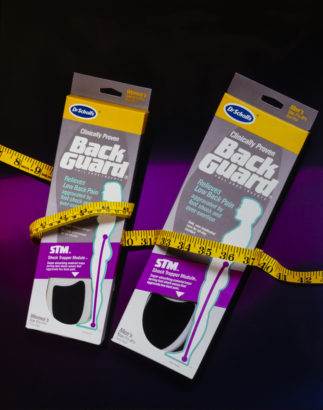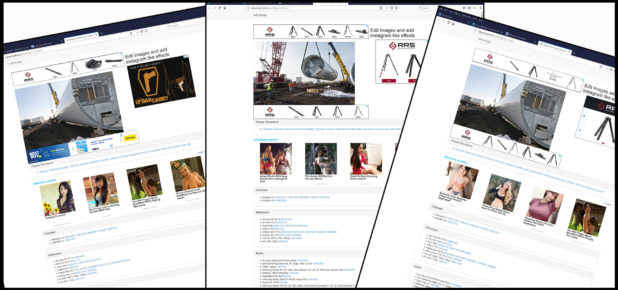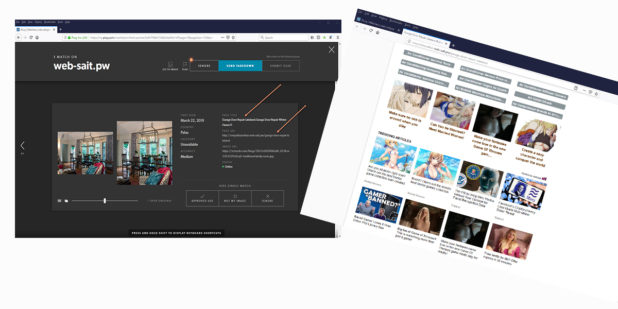A copyright discussion with a client can be used as a sales tool. Copyright registration is a benefit for the client which will help to differentiate you from your competition and establish you as a professional essentially working as a limited partner for the success of your client.
This is a fundamental change in the perception of how copyright registration is viewed by clients. Clients perception of copyright registration is based on the ways that photographers have used copyrights in the past. From 1976 to approximately 2008, commercial photographers typically used copyright registration as leverage to force less than ethical clients (the client infringers) to pay their bills. And I’m sure that there have also been some less than ethical photographers who have used copyrights to force payments that may not have been justified by the quality of the work delivered. It’s safe to say that copyright registration created a wedge between photographer and clients.
I would even go as far to say that some clients greatly resented photographers registering their images, because it was standard commercial practice for a photo studio to be given a very detailed comp also known as an artistic rendering, or marker comp rendering, of exactly what the photograph was to look like. From the client’s perspective, the artistic value of creativity was created in the comp and the photographer was simply acting as a technician to convert the rendering to photographic medium. Quite frankly, as a panel member in the past, I have argued on the side of the creative director/art director on this subject matter. As a result, some of my fellow photographers were not necessarily pleased.

The comp was identical to the product.
It’s easy to understand why copyright registration was so negatively viewed.
That was then.
Unfortunately, or fortunately, some clients have not been victimized by contemporary copyright infringers. The nature of copyright infringements has changed. Now it’s third parties harvesting images from your clients and using them for nefarious purposes and at times in direct competition with your client. Today’s copyright infringer is a third party, completely unrelated to your client, who is harvesting images.

My images being infringed are the industrial photos. They are being used as bait for the honey trap.

I have edited the image by blurring out explicit elements.
I briefly touched on this in my blog post titled, Is Your Photographer Copyright Registering, Third Party Infringements. In this article, I wrote about one of my real estate images that was used as a poison link to redirect viewers to a hard-core porn site, complete with explicit sexual images to entice the redirected victim to venture further. How many of your real estate agents would be delighted knowing that images from one of their listings was redirecting people to porn? If it happened to me, it can also happen to you.
Poison Link Video clip,
I picked a cartoon porn image hoping for the most non-offensive example and blurred out the explicit elements. Of course there was plenty of explicit videos which out of decency I chose not to use. And the website has now been taken down. Note: The source of the harvested image refused to remove my image from their data which would have broken the link to the downstream infringer.
Here’s how I’m protecting my clients using copyrights, This is now part of my photographic service to my clients. I guarantee that I will,
- Copyright register the images.
- Utilize a service (at my expense) to monitor the Internet for any unauthorized usages of the images.
- In the event that an unauthorized usage is found, at my expense and within the extent of the law, I will have the usage removed from the Internet.
I recently finished a product shoot where the client’s final deciding factor to hire me was based on these efforts I make to protect the images I produce for them. This client had already experienced their product images being used by other businesses for ads that directly competed against them.
Because my client is not the owner of the copyrights, they have no legal standing for the above services that I offer. Traditionally, the client’s option would be to utilize civil law, which can be very costly in terms of money (the five and six figure range) and time. By utilizing a DMCA takedown I can have the image removed virtually instantly.
My client is also not in the business of monitoring the Internet for unauthorized usages, and typically stumbles over these infringements after substantial damage has already been done. By utilizing a service to monitor the Internet, I can identify an infringer and, in many cases, mitigate before my client has suffered substantial damage.
Now you might be asking, “Why should you take on this additional responsibility and burden other than to establish yourself as the professional in your marketplace and offer a service that your competition doesn’t?”
The answer is simple. I am the owner of copyrights. This means all damages from unauthorized use of the work, such as statutory damages, go to me. This offsets any additional labor or expense for offering the service to my clients.
It’s a beautiful, symbiotic relationship. My client gets free protection and legal assistance to safeguard their business and I get to stop infringers and be paid damages from lost usage fees. My client is delighted that I am protecting them, and I am delighted to recover lost usage fees for work that was stolen.
And of course, my attorney is really happy too.
Resources:
Pixsy.com For searching the World Wide Web for unauthorized usages, you pay a subscription fee. In exchange for paying a subscription fee you’re free to use any attorney you want. This resource is best for photographers that want a more proactive hands-on approach in defending their copyrights.
Permission Machine, https://permissionmachine.us searches the worldwide web for unauthorized usages. They do not charge a fee for the search but if an infringement is found and you choose to pursue enforcement you are obligated by contract to use their services and their attorneys. Typically the attorney will take a 30% share of the reward as a contingent fee. Permissionmachine will take 50% of whatever you are awarded. Permissionmachine will manage litigation.
This is a good choice for photographer that doesn’t want to be bothered with the nitty-gritty of enforcing copyrights and is looking for a turnkey solution.
Image defenders, https://imagedefenders.com/ searches the World Wide Web for unauthorized usages. There is no charge for their search. You can use one of their attorneys or use your own attorney to enforce your copyrights. If you enforce your copyrights their percentage is 20% of settlement or award from the court.
There are numerous companies out there with varying degrees of terms of usage which will fit the comfort zone of just about any photographer wanting to enforce their copyrights and protect their clients.

There are no comments